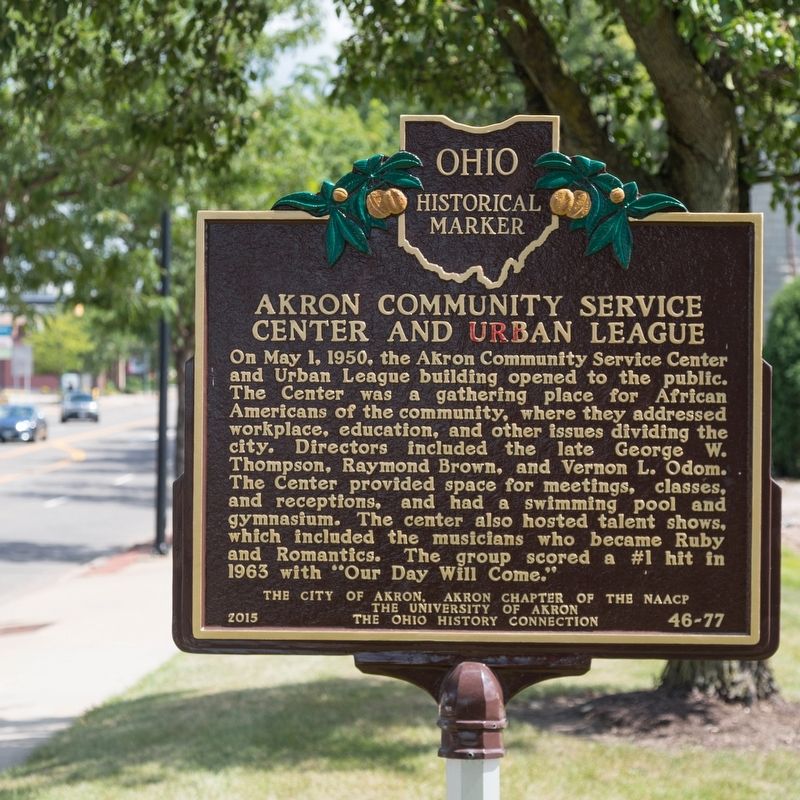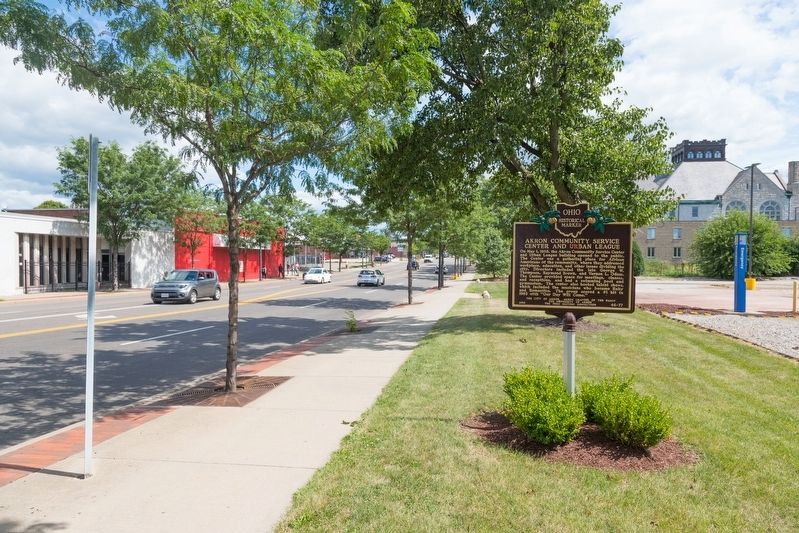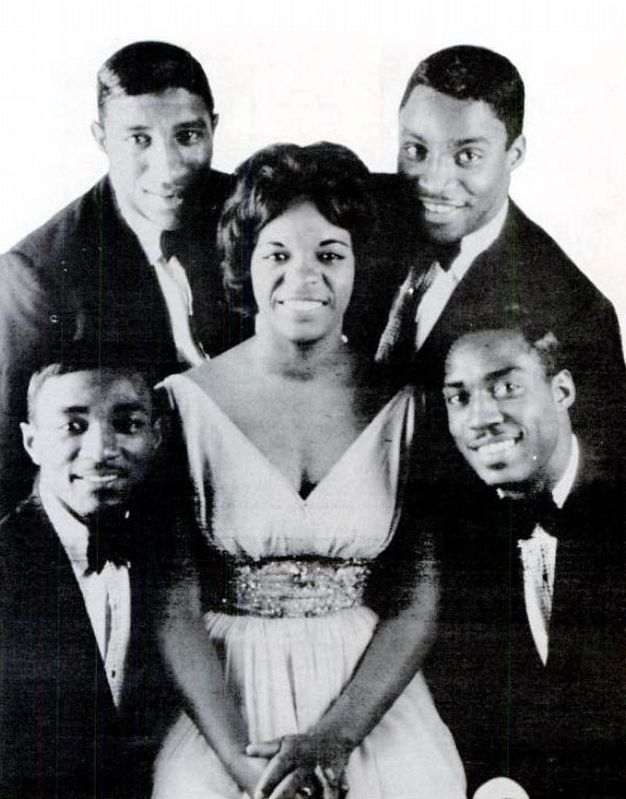Akron in Summit County, Ohio — The American Midwest (Great Lakes)
Akron Community Service Center and Urban League
Inscription.
On May 1, 1950, the Akron Community Service Center
and Urban League building opened to the public.
The Center was a gathering place for African
Americans of the community, where they addressed
workplace, education, and other issues dividing the
city. Directors included the late George W.
Thompson, Raymond Brown, and Vernon L. Odom.
The Center provided space for meetings, classes,
and receptions, and had a swimming pool and
gymnasium. The center also hosted talent shows,
which included the musicians who became Ruby
and the Romantics. The group scored a #1 hit in
1963 with “Our Day Will Come."
Erected 2015 by the City of Akron, Akron Chapter of the NAACP, the University of Akron and The Ohio History Connection. (Marker Number 46-77.)
Topics and series. This historical marker is listed in these topic lists: African Americans • Arts, Letters, Music. In addition, it is included in the Ohio Historical Society / The Ohio History Connection series list. A significant historical date for this entry is May 1, 1950.
Location. 41° 4.93′ N, 81° 30.572′ W. Marker is in Akron, Ohio, in Summit County. Marker is at the intersection of East Market Street (Ohio Route 18) and South College Sreet, on the right when traveling east on East Market Street. Touch for map. Marker is at or near this postal address: 250 E Market St, Akron OH 44308, United States of America. Touch for directions.
Other nearby markers. At least 8 other markers are within walking distance of this marker. Wesley Temple African Methodist Episcopal Zion Church (approx. ¼ mile away); 1936 Akron Rubber Strike (approx. 0.3 miles away); GG9 (approx. 0.4 miles away); Site of Sojourner Truth's Speech on Women's Rights (approx. 0.4 miles away); Contributions Of Women To Akron's Rubber Industry (approx. 0.4 miles away); Contributions Of African Americans To Akron's Rubber Industry (approx. 0.4 miles away); United States Synthetic Rubber Program 1939-1945 (approx. 0.4 miles away); Creating Crossroads of Commerce (approx. 0.4 miles away). Touch for a list and map of all markers in Akron.
More about this marker. The building has been razed but this marker marks the location.
Also see . . .
1. A Long and Local History. Excerpt:
With its location on Perkins Street, the Center was significantly hampered in its ability to provide services. In May of 1950, a new Akron Community Service Center and Urban League was constructed at 250 E. Market St. This new facility included all the amenities that were lacking for the black community. Fully equipped, the community center included a gymnasium, swimming pool, meeting rooms, classrooms, library, lounges and a kitchen. In the 1960s, an auditorium was added. It became the safe haven for the black community and offered recreational programs for children and adults when no other facilities in Akron would allow them through the doors.(Submitted on November 20, 2019.)
2. Wikipedia entry for Ruby & the Romantics. Excerpt:
After auditioning, the group was signed to New York-based Kapp Records; Kapp Records artist and repertoire chief Allen Stanton changed their name to “Ruby & the Romantics.” Their hit song “Our Day Will Come” was originally intended for another artist on the label, crooner Jack Jones of “Wives and Lovers” fame, but the group saw its potential and persuaded Stanton to let them record it. Their song became a smash, going all the way to # 1 on the Billboard Hot 100 Pop Chart, as well as reaching # 1 on the Billboard R&B Chart.(Submitted on November 20, 2019.)
By the year 1963, the group’s next release, “My Summer Love,” reached The Top 20, charting at No. 16 on the Hot 100 and a third release, the original version of “Hey There Lonely Boy” climbed to No. 27.
Credits. This page was last revised on November 20, 2019. It was originally submitted on November 20, 2019, by J. J. Prats of Powell, Ohio. This page has been viewed 408 times since then and 52 times this year. Photos: 1, 2, 3. submitted on November 20, 2019, by J. J. Prats of Powell, Ohio.


